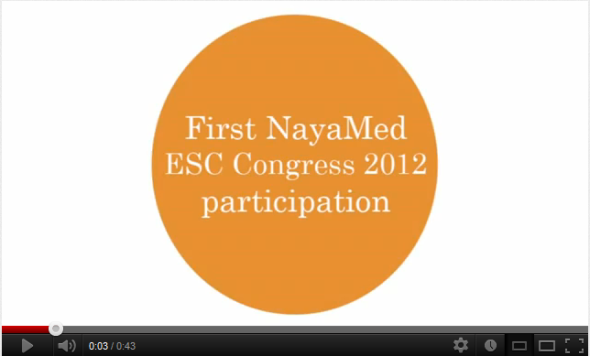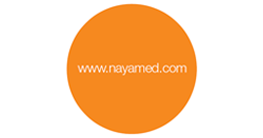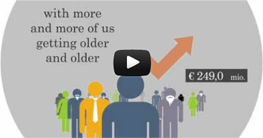Thank you for visiting us at the ESC Congress 2012 in Munich
Posted: September 10, 2012 Filed under: NayaMed spirit | Tags: bradycardia, cardiac electrophysiology, cardiac techniques, congress, eHealthcare, ESC, Germany, Health 2.0, healthcare organizations, ICD, Medical Devices, Munich, pacemaker, pacemakers, video 4 CommentsKodak, the Roman Empire, Italian unity and Healthcare
Posted: January 19, 2012 Filed under: Medical Devices, Opinions | Tags: healthcare applications, healthcare organizations, Medical Devices 1 Comment It’s an odd title, I know, but please bear with me; there’s a reason for that.
It’s an odd title, I know, but please bear with me; there’s a reason for that.
Eastman Kodak Company (commonly known as Kodak) was founded in 1892 in in Rochester, New York. It is a company that I find very interesting because in the late 1800 Kodak innovated profoundly the photographic business by selling inexpensive cameras and making large margins on consumables[1]. Kodak strategy was so successful that in the late 1976 it was leading the US market with over 90% market share in film sales and 85% in camera sales. Astonishing, isn’t it?
So what happened? Why all people I know look at Kodak today as a modern antique?
I believe that the answer is in a study made in 2005 by the Harvard Business School, according to which Kodak failed because its “seemingly unassailable competitive positions fostered Kodak’s unimaginative executive culture”[2]
Is that correct? Is it all about imagination? I believe so, well maybe not just imagination but also being able to challenge the status quo to face future challenges. I believe that empires, companies and cultures, at a certain point of their lifecycle start to suffer of what I call “The Roman Empire Syndrome”.
You might say: “Hold on a second. What is the link between a global company selling camera films and the Roman Empire?”
We all know the history of the Roman Empire, its success and continuous growth over several hundreds of years. In the third century Rome faced a number of crises, but the Empire was too vast and ungovernable, therefore unable to react quickly to new challenges. That was the beginning of the end, started in 293 AD, when the emperor Diocletian decided to split the empire first in two parts and then in four transforming it into a tetrarchy.
So what I believe is that intrinsically big organizations contain the seed of their own end; for the simple reason that when they become very large they also become too innerly focused and unable to adapt quickly to a changing environment[3].
Coming back to today, we are facing the biggest economic challenge of the European Union. The current situation is generating additional taxes and austerity measures, including the healthcare sector which has more and more restricted budgets. On the other hand, the European population is growing older and older. If we only consider the five biggest European countries (Germany, UK, France, Italy and Spain) 18% or more of the population is above 65, with Italy and Germany being more than 20%[4].
So we could say that the European healthcare system (including National Health, Industry, Hospitals, etc…) is facing a major challenge: how can I treat an increasing patient population, demanding always better quality of care, with flat or shrinking budgets?
This challenge is addressed to all actors: governments, institutions, hospitals and also the Industry. I think that NayaMed is nothing else than one of the first answers (and probably not the only one) to the real needs of Healthcare today. I think that initiatives like NayaMed will sparkle and inspire the medical device industry in how we can achieve more with less. Because, similarly to the Roman Empire or Kodak, I don’t see today the major medical device companies taking a step-change and rethinking their business model, adapting to the changing environment[5].
Massimo D’Azeglio, an Italian politician and patriot, said during the Italian Unification: “We have made Italy, now we must make the Italians”[6]. Today, after having spent a lot of efforts in building NayaMed, it is exactly the same challenge that we are facing. We have generated a new sparkle in the healthcare market, now we have to ignite the change in our customers, partners and even competitors.
So, to make a long story short, yesterday NayaMed did the first ICD implant in the hospital S.Orsola in Bologna… and today I’m feeling like Johnny Utah in Point Break when, just before parachuting down from a plane for the first time, one of the other surfers tells him “You’re about to jump out a perfectly good airplane Jonny, how do you feel about that?”[7].
My answer would be: good.
Andrea Pedrazzini
Marketing Manager NayaMed
[1] Business model that will be readopted in the future by the home printing market and personal shaving market
[2] Gavetti, G., Henderson, R. and Giorgi, S., Kodak and the Digital Revolution (A), 2005, Harvard Business School, HBS Press
[3] We could talk about Darwinism also, but someone else already applied the principles of the Natural Selection to companies better than me
[4] CIA World Fact book
[5] I particularly refer to the European Market and the European healthcare
[6] I know, the quote is controversial. Apparently what Massimo D’Azeglio said was: “Unfortunately we have made Italy but we haven’t made Italians”. According to the historians Simonetta Soldani and Gabriele Turi, the sentence that I’m quoting was coined in 1886 by Ferdinando Martini “in an attempt to translate the political sense” of the original one.
[7] Point Break – 1991. My wife, which is a way better English speaker than I am, suggest that the sentence should be “You’re about to jump off a perfectly good airplane Jonny, how do you feel about that?”. I report the sentence as in the movie, acknowledging that a bank-robber-surfer-that-is-jumping-off-a-plane might do an English mistake…
Health 2.0 Europe 2011
Posted: November 7, 2011 Filed under: eHealthCare | Tags: clinical infrastructure, eHealthcare, Health 2.0, healthcare applications, healthcare organizations Leave a commentLast week, NayaMed was at Health 2.0 Europe 2011 in Berlin. Health 2.0 is a well-known conference in e-Healthcare which takes place every year in San Francisco for the US, New Delhi for Asia and Berlin for Europe. It was only the second edition for Berlin this year (the fifth one for San Francisco). People from the Medical Industry, Healthcare Organizations, hospitals, composed the audience: a hundred of people listening carefully to the speakers in the auditorium of the Charite University of Medecine of Berlin.
Speakers came on stage with wonderful experiences, from all Europe: over 35 speakers from 15 countries. We have seen demos about social media applications to link patients to clinicians, social networks for doctors, specific applications to help clinicians in their daily jobs, websites delivering useful information for patients.
Some interesting debates took place such as how 2.0 tools could speed up the creation of an electronic infrastructure in clinical care.
Two comments, though:
– Only few things were really innovative, technologically speaking, most of those applications have been used for years in traditional B2C industries.
– Having also some demos from American speakers, we could feel the gap between Europe and the US, not only in the technology but in the use of it and how well this technology has been integrated in American’s lives. When we are still talking about social media or mobile applications to connect patients to clinicians, they have already set up a real and advanced doctor’s consultation through Internet (http://www.americanwell.com/ )
However, if the gap with other industries or with the US is still important, we have to underline the passion of the speakers. This, for sure, will help to bridge the gap and make Health 2.0 Europe a more and more interesting conference in the future.
Some interesting demos:
– Social network for doctors in Sweden and in the UK: http://www.meduniverse.se/, http://www.doccheck.com
– Jorge Juan Fernandez from Hospital Sant Joan de Déu, Liquid Hospital Project in Spain, connecting patients to clinicians: http://www.hsjdbcn.org/
– Rachel Iredale from Cancer Genetics Story bank, collection of patient stories to share patient related information about cancer: http://www.cancergeneticsstorybank.co.uk/
– Specific applications for clinicians: http://medting.com/, http://www.doctoralia.com/, http://www.epgonline.org/
– New video platform for Healthcare created by Publicis Healthware: http://www.videum.com



